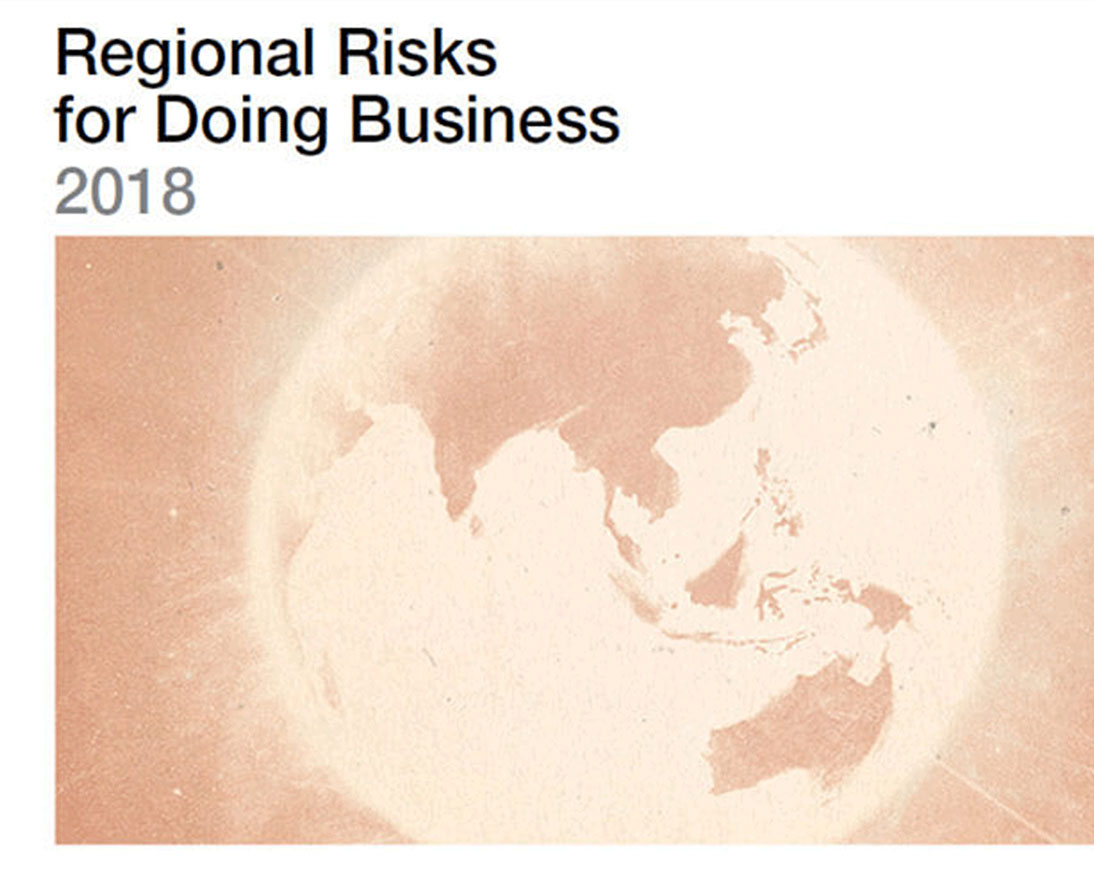Risky business…
Global risksArticleNovember 12, 20184 min read
Economic challenges remain at the forefront of the private sector, despite the buoyant global growth environment.
As the end of the year beckons and we ponder what the world will look like in 2019, the World Economic Forum’s latest report, with Zurich as strategic partner, gives food for thought. Titled Regional Risks for Doing Business, it is notable that economic challenges remain at the forefront of the private sector, despite the buoyant global growth environment. It certainly resonates with my own view that many vulnerabilities still exist - the good times have not been used as productively as they might to address these issues, leaving the global economy exposed to the next cyclical downturn.
Regional challenges vary, but most intriguing to me is that unemployment was identified in the report as the single biggest risk on a global basis. At first glance this seems somewhat counterintuitive. Unemployment has – after all - been falling in most regions, with the US now at a 49-year low, UK at a 43-year low, Japan a 25-year low and even the Eurozone now at a cycle low. What this means, however, is that it is increasingly difficult to find qualified recruits. And while companies may see low unemployment as a risk to their hiring plans, low unemployment also masks the fear and discontentment that pervades the workforce in most regions. Clearly the combination of glacial wage growth, automation and outsourcing have eroded worker sentiment and helped fuel populism. Though Amazon has hit the headlines by boosting their minimum wage to $15 an hour, income inequality remains a key concern in most regions and needs to be addressed more comprehensively to help bolster economic and social resilience.
The second most prevalent macroeconomic risk identified is ‘fiscal crisis’, with many regions noting it as a pertinent threat. This relates to my pet topic of excessive debt. Global indebtedness at the household, corporate and government levels continue to rise, and dependencies within the financial system have not been addressed. While much attention is currently on Italy - with 132% debt to GDP, a fragile banking network and rising fiscal profligacy - the reality is that due to the financial inter-linkages, this has Europe-wide and even global consequences. Fiscal issues do not reside in Italy alone, it is a prime concern in many regions, including Eurasia and the US, where the fiscal deficit is on track to rise next year to the highest level in a non-war, non-recessionary period. This is troubling given the strength of US growth in recent years and begs the question: ‘what will happen in the next downturn?’ Governments need credible fiscal initiatives to tackle excessive debt levels while growth is good, or else they will find themselves with their hands tied in being able to provide stimulus when the party is over.
Unfortunately, that time may be sooner than many suspect. It’s not that I see a major catastrophe ahead, it’s simply that growth is running out of steam. The US economy is currently growing rapidly and beyond its potential, resulting in little spare capacity. Consequently, there is a limit to how fast it can expand from here. An eighth interest rate hike, with more to come, and a shrinking of the Fed’s balance sheet are rising headwinds that will impact growth in the quarters ahead - resulting in a modest contraction as we get in to 2020. This will of course have consequences for other regions and could prematurely curtail their expansion at a time when weak links remain.
The good news is that - for now - the global macro environment remains strong and buys time to shore up vulnerabilities. However, with global liquidity shrinking, financial conditions tightening and the cycle maturing, the Regional Risks for Doing Business report is a timely reminder of some of the issues that need to be addressed at both the local and global levels.







